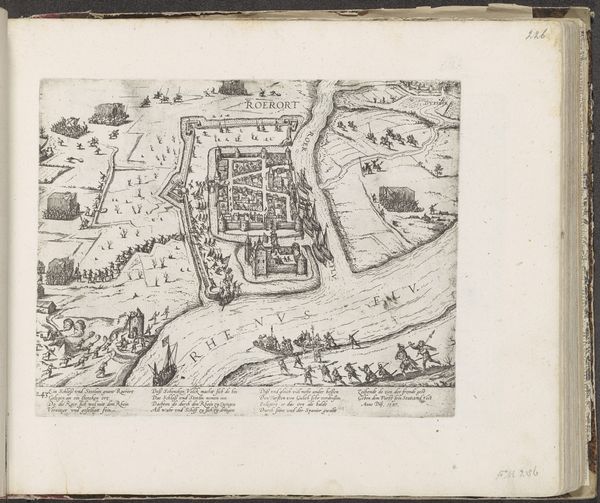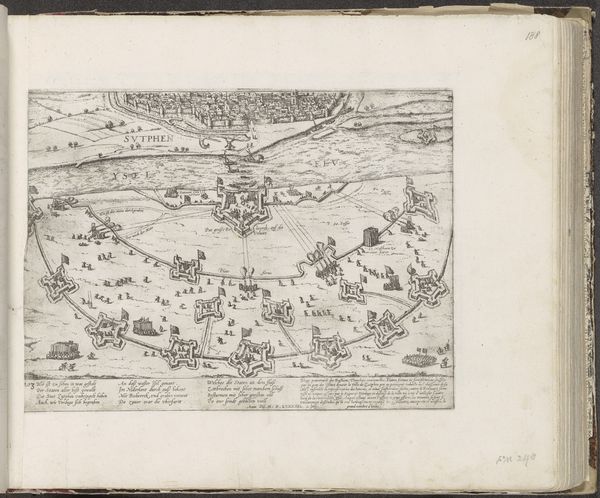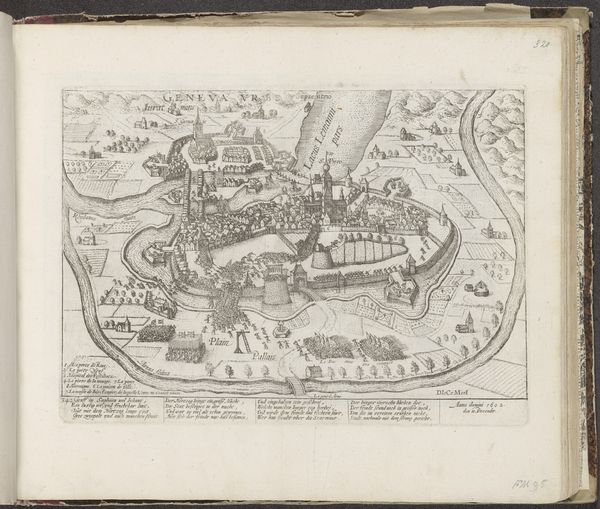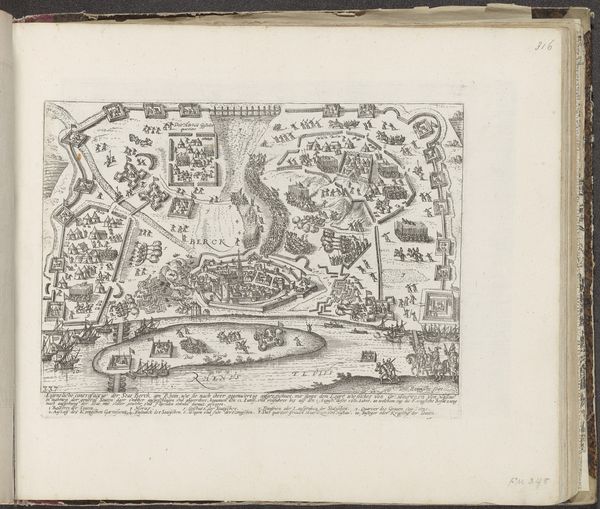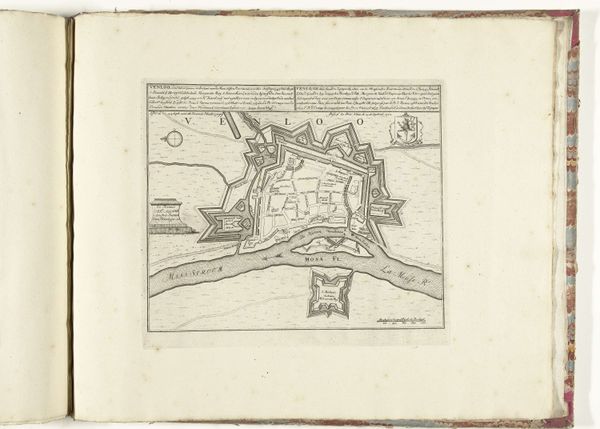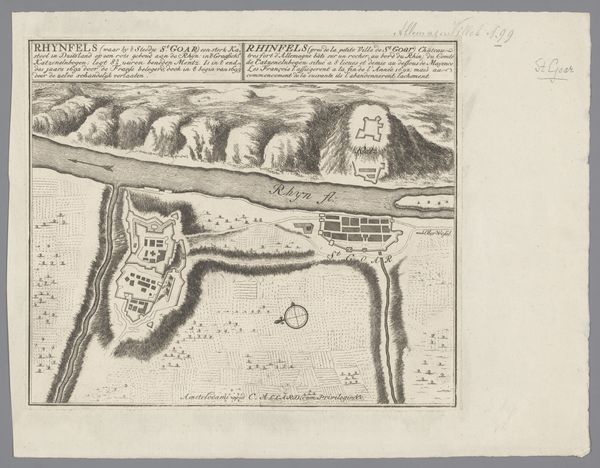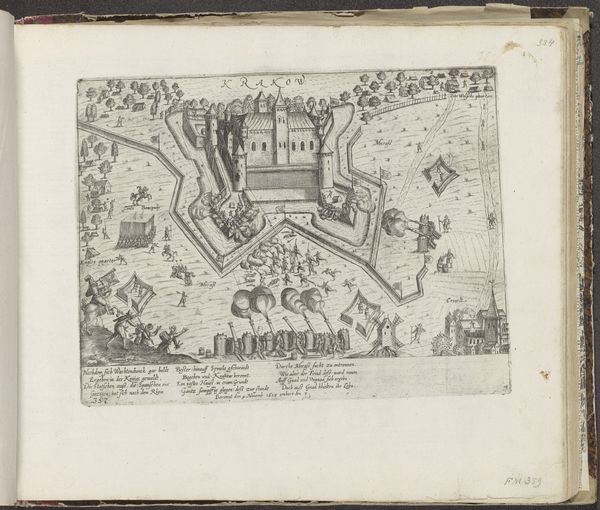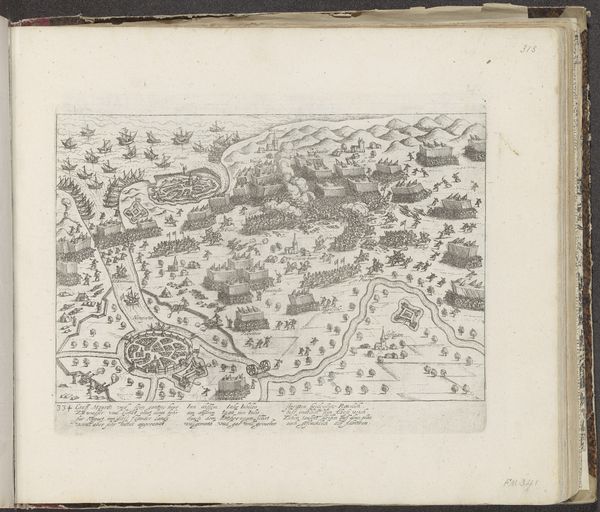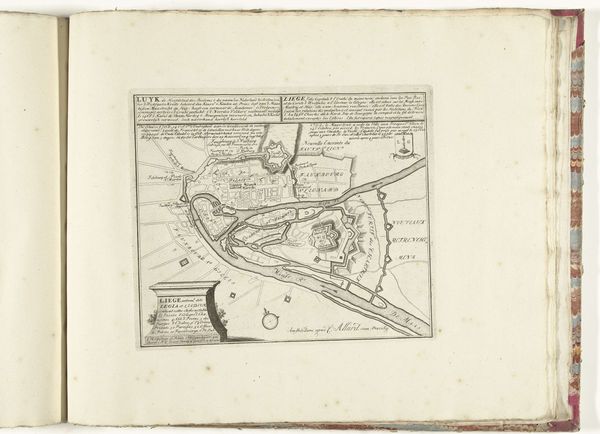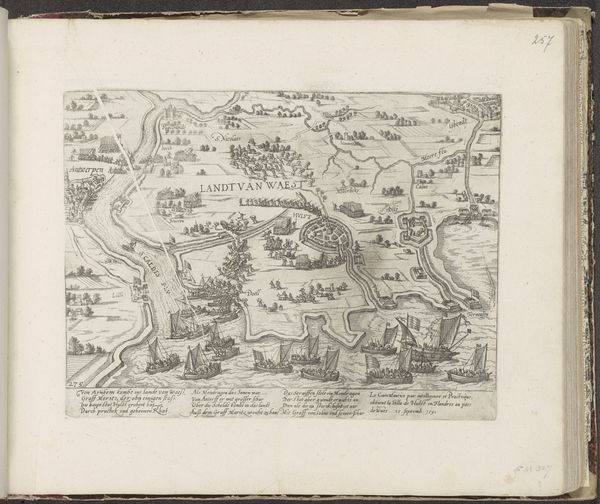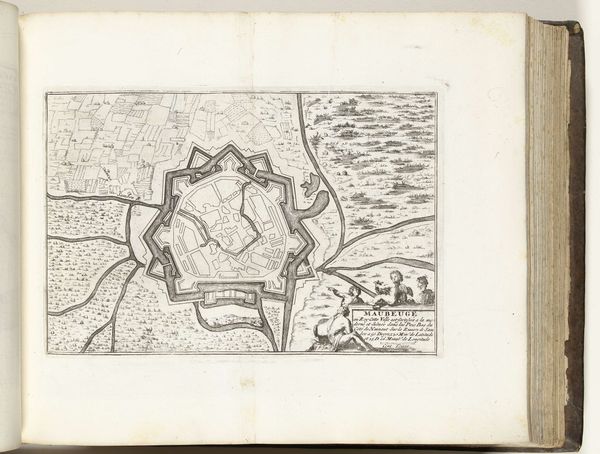
drawing, print, paper, ink, engraving
#
drawing
#
narrative-art
# print
#
pen sketch
#
landscape
#
perspective
#
mannerism
#
paper
#
ink
#
geometric
#
cityscape
#
history-painting
#
engraving
Dimensions: height 207 mm, width 280 mm
Copyright: Rijks Museum: Open Domain
Curator: So, here we have "Schloß Horst verloren voor Truchsess, 1585", dating back to around 1587-1591, attributed to Frans Hogenberg. It's held here at the Rijksmuseum. Editor: Wow, immediately struck by how precise yet frantic it feels. All those tiny figures… looks like organized chaos rendered in ink. Curator: Precisely. It's an engraving, you see, meticulously crafted with ink on paper. Hogenberg captures a historical moment – the loss of Horst Castle to Truchsess. A bird’s-eye view offers a strategic layout of the landscape and fortifications. Editor: And I'm wondering about the paper itself. Was it locally sourced? Linen or hemp based? It dictates so much about the receptivity of the ink, the fineness of the lines Hogenberg could achieve. Those decisions speak to availability, to trade routes, to the political power embedded in the materials. Curator: Indeed! And consider the laborious process of engraving; each line carefully etched onto a plate. It speaks of dedication and a real commitment to documentation in a turbulent time. What's most interesting is the fusion of geometric precision with, like you mentioned, almost frenzied depictions of armies clashing. Editor: Yes, and the act of printing. It democratized the image, reproduced it for wider consumption. Each print becomes a tangible link in the chain of information dissemination, of political narratives being circulated and reinforced. Think about how many hands it passed through, impacting their understanding of events… Curator: Exactly, Hogenberg isn’t just recording; he's actively shaping the perception of these events. Notice the perspective. It creates a sense of depth, but also detachment, almost as if we are bystanders watching a play unfold. There’s even an element of the fantastical in this otherwise documentary piece. Editor: So, less a window into reality and more a lens refracting power dynamics? All that intensive labor, bound into each print, ultimately serving the purposes of legitimizing particular accounts, of reinforcing hierarchies through image production. Fascinating. Curator: It is isn't it? I think what lingers with me most is the weight of all that detail, it hints at stories, not just battles but also of individual lives swept up by the political maelstrom. Editor: And for me, I’m now preoccupied by those anonymous artisans involved in papermaking and ink production. Their silent contribution forms the material base upon which this historical narrative unfolds.
Comments
No comments
Be the first to comment and join the conversation on the ultimate creative platform.
